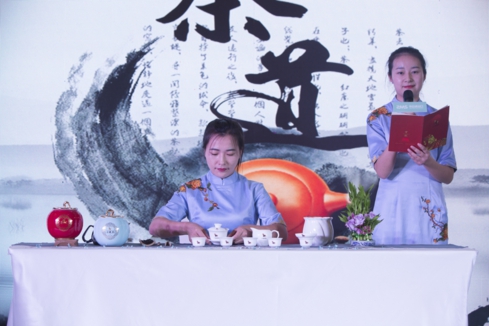
The anniversary celebration held by ZMS cable definitely makes people feel the huge difference. It is more to reflect the larger stage and vision for internationalization. But it also added some Chinese elements, such as tea ceremony.
There are six types of tea: black tea, green tea, black tea, yellow tea, green tea (oolong tea) and white tea. The tea ceremony expresses a certain performance art of courtesy, character, artistic conception, aesthetic point of view and spiritual thought through tea tasting activities.
It is a combination of tea art and spirit, and expresses spirit through tea art. In the Tang Dynasty of China, it flourished in the Song and Ming dynasties and declined in the Qing Dynasty. The main content of the Chinese tea ceremony pays attention to the beauty of the five worlds, namely tea, tea, heat, tea set, environment, and emotional conditions, in order to seek the highest enjoyment of "taste" and "heart".
Known as the aesthetic religion, the Japanese tea ceremony with the basic spirit of harmony, respect, purity and silence is the legacy of the Tang and Song Dynasties.
Put the tea into the pot and boil it in water. The earliest account of the Song Dynasty, there is the saying of "eat tea." Popular in the Tang Dynasty.
The gold tea set unearthed at Famen Temple shows the situation of people eating tea in the Tang Dynasty. After the tea is dried, it is ground into a powder and boiled with water. Sometimes, when the tea is brewed, salt and other seasonings are added. When drinking tea, it is drunk with the tea, so it is called “eat tea”.
The sencha in the Tang Dynasty is the earliest form of art tasting of tea.
The ancient literati, each carrying tea and water, passed the tea noodle soup and tasted the tea soup to determine the quality of tea. Fighting tea is also known as the battle of martial arts. It flourished at the end of the Tang Dynasty and flourished in the Song Dynasty.
First popular in the Jianzhou area of Fujian. Fighting tea is the highest expression of ancient tea art. The ultimate goal is to taste, especially to absorb the soup on the tea surface. Finally, the tea-teacher must also taste the tea soup, so that the color, the fragrance and the taste are all good, and it is the final victory of the tea.
The popular Gongfu tea in some areas in the Qing Dynasty has been the lingering aftertaste of tea art since the Tang and Song Dynasties. Qing Dynasty Gongfu tea is popular in Tingzhou, Zhangzhou, Quanzhou and Chaozhou in Guangdong.
Later, it was also popular in the Tuen Mun area of Anhui. Gongfu tea pays attention to drinking time. Drinking tea, there are two kinds of self-destruction and hospitality, especially hospitality, more particular.